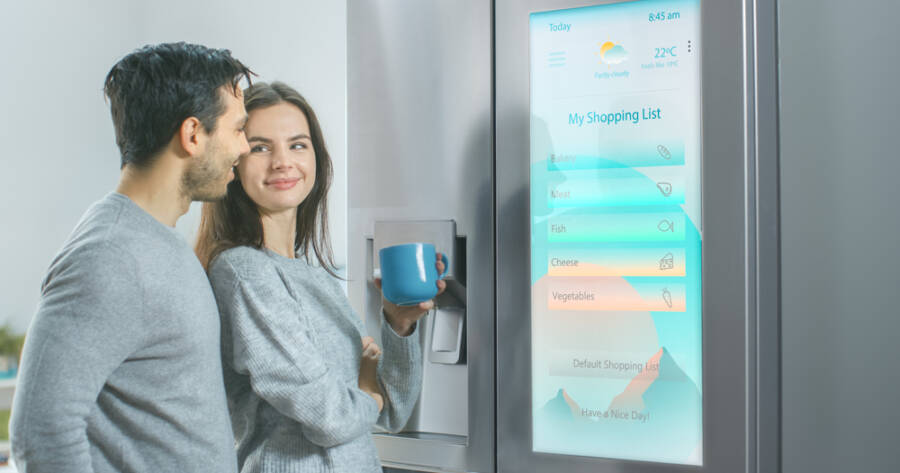As the modern world becomes increasingly interconnected, the concept of smart homes is transforming how we live. By integrating technology into our living spaces, smart homes provide seamless, intuitive experiences that enhance comfort, efficiency, and security. From smart thermostats and lighting to voice-activated assistants and advanced security systems, these technologies enable us to manage our environments with ease. Learn how to create smart spaces, and gain insights into how the integration of technology can revolutionize home living and elevate daily life.
Embracing Smart Home Basics
The foundation of a smart home lies in its interconnected devices, which communicate through wireless protocols like Wi-Fi, Bluetooth, and Zigbee. These IoT (Internet of Things) devices can be controlled remotely or automated, offering convenient access and management using smartphones, tablets, or voice commands.
Central to smart home functionality are hubs or control systems, which streamline device communication and enable unified control over various gadgets. These hubs might include devices like Amazon Echo, Google Nest Hub, or Apple HomePod, allowing residents to interact with devices through simple voice commands. As the hub learns user preferences, it could tailor its responses and suggestions, contributing to a personalized environment.
Lighting and Climate Control
Smart lighting and climate control systems contribute significantly to creating comfortable and energy-efficient smart spaces. Smart lighting solutions, such as Philips Hue or LIFX, allow users to customize light settings using apps or voice commands, adjusting brightness, color, and schedules. Automated lighting can simulate presence even when away, contributing to home security and offering flexibility.
Smart thermostats, such as those from Nest or Ecobee, optimize energy use by learning from inhabitants’ schedules and preferences. These devices can adjust heating and cooling settings to provide consistent comfort while reducing energy consumption and costs. By integrating with weather forecasts or motion sensors, smart thermostats adapt to changing conditions, ensuring homes remain comfortable year-round.
Enhancing Security with Smart Technology
Security remains a top priority for homeowners, and smart technology offers an array of solutions to enhance safety and peace of mind. Smart security systems typically include cameras, motion sensors, doorbell cameras, and automated locks, enabling real-time monitoring from anywhere.
Devices like Ring or Arlo cameras provide live feeds and notifications, alerting users to unusual activity. Automated locks from August or Schlage allow keyless entry and monitoring of who enters and exits the home, enhancing accessibility and control. Most systems offer seamless integration into other smart home components, creating a robust, interconnected security network.
Audio and Visual Enhancements
Entertainment technologies play a central role in the smart home experience, with innovations in audio and visual systems elevating leisure time. Smart TVs, integrated with devices like Roku or Chromecast, offer seamless integration with streaming platforms, allowing for effortless content access.
Audio systems, such as Sonos, provide high-quality sound experiences, enabling users to stream music throughout the house or set up distinct audio zones for different activities. Voice-enabled speakers also double as smart assistants, offering news, weather updates, and reminders, redefining how we interact with our entertainment ecosystems.
Kitchen Innovations Driving Efficiency
The integration of technology into kitchen spaces has redefined culinary experiences, emphasizing convenience and efficiency. Smart appliances, like ovens, refrigerators, and coffee machines, can be controlled remotely to optimize functionality and workflow.
Smart refrigerators offer features like inventory tracking and meal planning, while ovens can preheat based on selected recipes. Coffee machines with scheduling capabilities ensure your brew is ready when you wake up. These innovations not only save time but also promote efficient resource management and personalized experiences.
The Role of Automation and AI in Smart Spaces
Automation and artificial intelligence are the driving forces behind the transformation of smart homes, providing intelligent systems that learn and adapt over time. AI systems like Google Assistant or Amazon Alexa integrate with various smart devices, paying attention to patterns and user preferences.
By automating daily routines, such as adjusting lighting or locking doors at night, smart homes reduce the need for manual intervention, supporting a seamless user experience. Continuous learning and predictive capabilities allow these systems to anticipate needs and offer proactive solutions, enhancing quality of life.
Addressing Privacy and Security Concerns
While the benefits of smart spaces are substantial, privacy and security remain essential considerations. As IoT devices collect data to tailor experiences, safeguarding this information is paramount.
Users should ensure devices are protected with strong passwords, enable two-factor authentication, and regularly update software. Choosing products from reputable companies with robust privacy policies can reduce vulnerability to cyber threats. Balancing convenience with privacy fosters trust in the smart home ecosystem, encouraging broader adoption.
Learn More Today!
The integration of technology into our homes offers transformative potential in enhancing daily living through the creation of smart spaces. By embracing interconnected devices, users can enjoy increased comfort, security, and efficiency. From lighting and climate control to security, entertainment, and kitchen automation, these innovations support easy, personalized experiences.
With a focus on privacy, smart homes pave the way for a future where technology aligns with lifestyle aspirations, offering a harmonious blend of progress and practicality. By adopting smart technology thoughtfully, individuals can enhance quality of life, enjoying a seamless home experience that caters to their unique needs and preferences.

